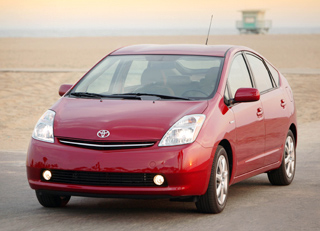
PALM SPRINGS, CA – Toyota Motor Corp. and Fuji Heavy Industries Ltd. have swapped more than 100 engineers in order to explore possible synergies between the two auto makers, a Subaru of America Inc. official says.
“Toyota sent about 100-150 over to Subaru and vice versa,” David Sullivan, product car line manager for SOA, tells Ward’s at a media event here.
“That exchange started a couple months after the agreement was reached for Toyota to invest in 8.7% of our parent (Fuji),” he says. “So there’s some intermingling going on right now, and in a year or two I think you’ll see that bear some fruit for both companies.”
Toyota purchased a stake in Fuji about 18 months ago, largely to gain capacity for Camry production at Subaru of Indiana Automotive Inc.’s plant in Lafayette, IN.
But the alliance also has opened doors for other opportunities, such as technology swapping, Sullivan says.
One scenario sees Subaru adapting Toyota’s hybrid technology for use in one of its vehicles, he says.
“The development (of hybrid-electric vehicles) is half the battle,” Sullivan says. “And I think that’s what we’re kind of hoping to get from the alliance; the expertise behind making it a seamless powertrain alternative over the long-term. It’s something our senior leadership has said is one of the reasons we wanted the alliance.”

Toyota also could choose to tap into Subaru’s engineering know-how, possibly borrowing some of the auto maker’s signature all-wheel-drive technology.
“I suspect (Toyota is) fascinated with our AWD technology,” says Timothy Mahoney, senior vice president and chief marketing officer at SOA.
Meanwhile, Sullivan says adding Camry production at Subaru’s Lafayette plant has proved mutually beneficial.
When Subaru bought out former plant partner Isuzu Motors Ltd. in 2004, Lafayette was running at less than capacity, he says.
“We were able to fill up (capacity) with the (Subaru) Tribeca (cross/utility vehicle), but unfortunately we were unable to fill up 100%,” Sullivan says. “Now with Camry onboard, it allows us to fully utilize the plant. And Toyota can put more Camrys (on) the market.”
The addition of the Camry also lowers Subaru’s fixed costs and provides a glimpse into the inner workings of Toyota’s famed quality management system, he says.



